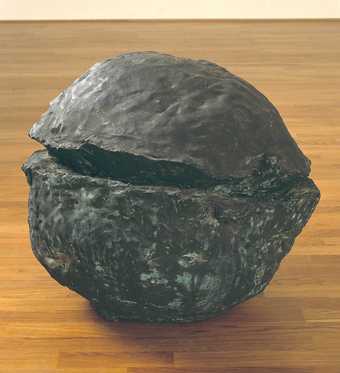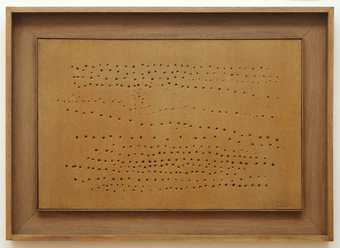The movement (Movimento Spaziale – spacialist movement, or spacialism) was launched in 1947 after Lucio Fontana’s return to Italy from Argentina with the first Manifiesto Spaziale (spatialist manifesto). In this, and in the several more that followed, Fontana developed the ideas of the Manifiesto Blanco issued at the Altamira Academy in Buenos Aires the year before. There he had called for an art that embraced science and technology and made use of such things as neon light, radio and television.
In 1949 Fontana installed his Ambiente Spaziale at the Galleria del Naviglio in Milan. It consisted of an abstract object painted with phosphorescent paint and lit by a neon light, and was a pioneering example of what became known as installation art. He subsequently went on to make the works on canvas to which he gave the generic title of Concetto Spaziale (spatial concept) although continuing to make installations using light. The basis of the Concetto Spaziale works was the piercing, or later slashing with a razor, of the canvas to create an actual dimension of space. Fontana made a long series of these and extended the idea into sculpture in his Concetto Spaziale, Natura series.
Other Spazialismo artists included Gianni Dova and Roberto Crippa.


